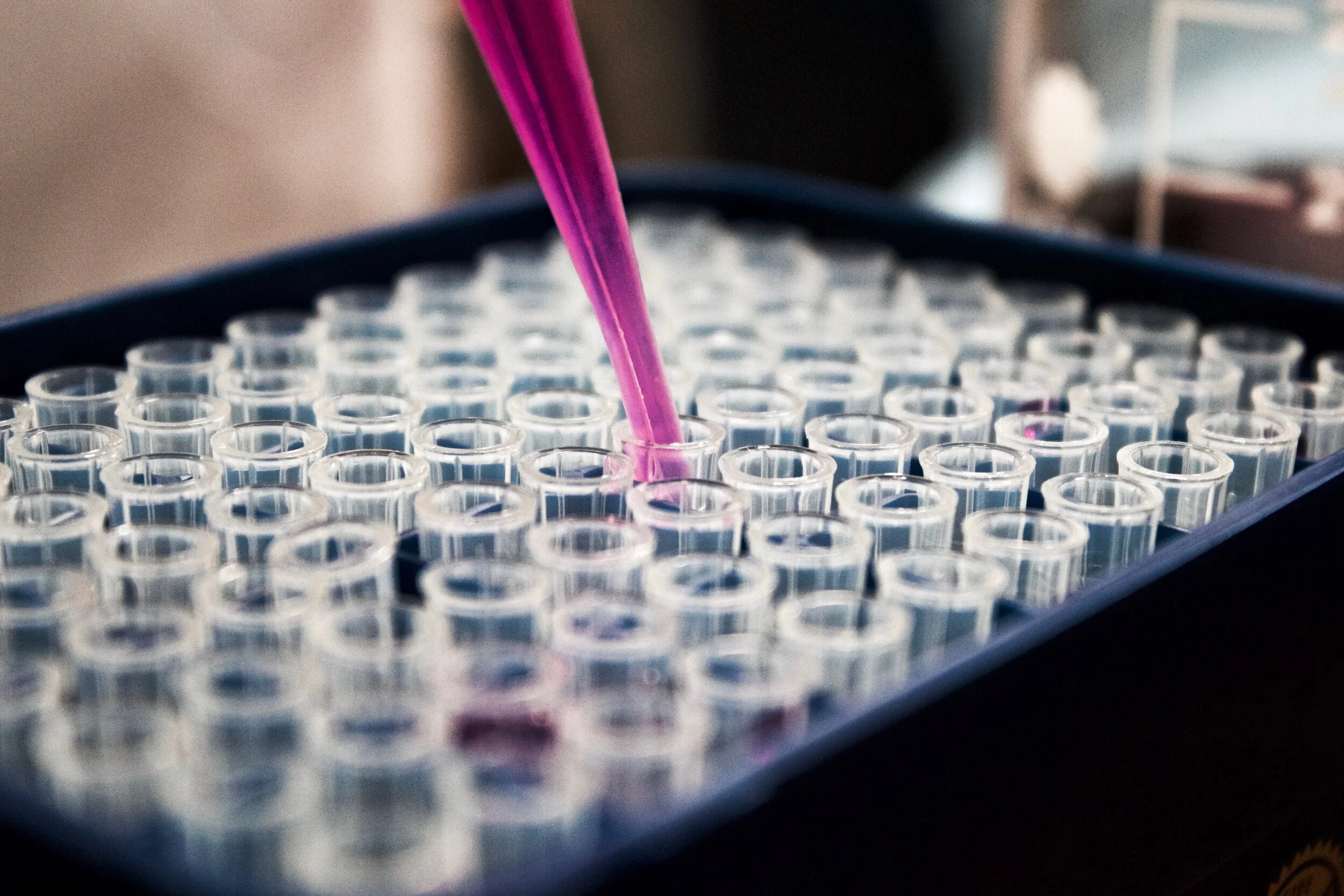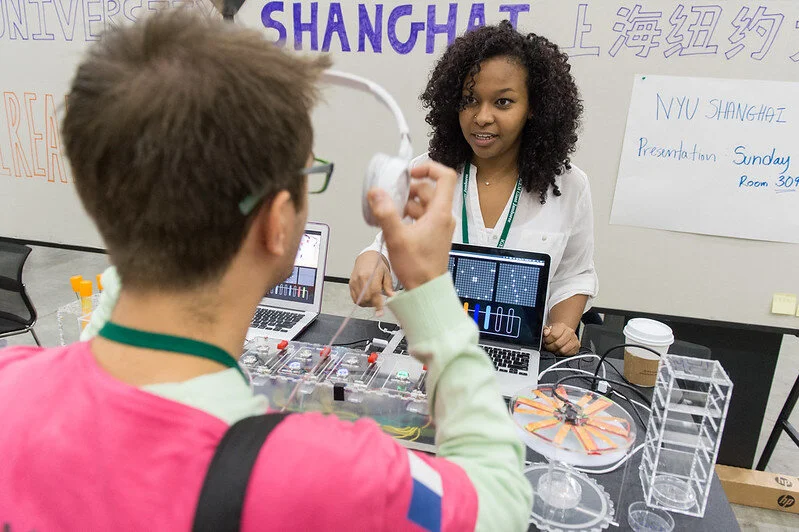Training Ground For Today and Tomorrow: The iGEM Safety and Security Program
A message on behalf of the Safety and Security Committee from iGEM’s Vice President of Safety and Security
iGEM is built on the idea of local people solving local problems, through the power of synthetic biology. As a member of the iGEM community, you are tasked with building the better world of tomorrow in which we all want to live. You will be the leading scientists, engineers, titans of industry, or policymakers that will make that world a reality. If you look back at what teams have attempted in the past, you will see thousands of people motivated to improve the human condition; a world where more people have access to improved ways of doing and making things. Our teams want to be part of the solution – not part of the problem!
Via Unspalsh - Louis Reed
All synthetic biology and modern biotechnology come with some potential to cause harm. Most of the time, especially for those still studying, these risks are managed by someone else. Someone has planned what you will use, and what you will do with it. They make sure that there are procedures and practices in place to minimize potential harm – whether that be to you, your colleagues, your community, or to the environment. iGEM believes that a good synthetic biologist is also a safe, secure, and responsible biological engineer. That means you are responsible for doing what you can to make sure there are no accidental or deliberate risks. These may be important skills for the future, regardless of whether you plan to be running a lab or a company. In either case, you will need to sign off that such risks are being managed. To be able to do this, you will need to understand why and how. Of course, identifying and managing risks from synthetic biology can be a career of its own. It is noteworthy that several of the After iGEM delegates interviewed in this issue have gone on to work specifically on safety and security issues.
iGEM works hard to support you in being safe and secure. Thanks to a grant from Open Philanthropy, we have a comprehensive and active Safety and Security Program. To make it clear exactly what we expect from you, we have put together a set of Safety and Security Rules. We have a series of Policies that address specific issues like: not releasing your project from your lab, human experimentation, human subjects research, gene drives, antimicrobial resistance, and the use of animals in projects.
Throughout the year we want you to tell us about any hazards you have identified from your work, and what procedures and practices you are using to manage these risks. To help you, we provide you tools, like the White List, which helps you identify organisms, parts, or activities that might pose an elevated risk. We also provide a wide range of safety and security resources and links for you to learn more about these issues. For example, we organized a session on Maximizing Benefits, Minimizing Risks during Opening Weekend and are hosting an ongoing Values and Risks workshop series with the After iGEM Ambassadors. You are also supported by the Safety and Security Committee, made up of members from all over the world, with expertise in laboratory biosafety, biosecurity, contained use, bioethics, animal use, dual-use, as well as current and former regulators. They are ready to help you identify and manage risks.
When most teams are beginning to move from the planning stage into the lab, and again when many teams are moving from the lab into putting together their talks, posters, and wikis, we ask you to complete our Safety and Security Form. You use this to tell us about potential hazards and how you are managing them. Those forms are reviewed by internationally certified biorisk professionals. They ensure all relevant hazards have been identified and appropriate risk management is in place. We use these forms to help identify teams that might need more support. Any time a team wants to use or do something that might pose a greater than normal risk (i.e., not covered by our White List), we want you to tell us about your plans in advance, using the Check-In Form. These are reviewed by our Safety and Security Committee to make sure that the risks are being appropriately managed. Any time a team wants to use vertebrates (e.g., rats, mice, guinea pigs, hamsters), or higher order invertebrates (e.g., cuttlefish, octopus, squid, lobster) in their project, they need to get permission from the Safety and Security Committee using the Animal Use Form. Together, these forms also provide a lasting, open record of how the iGEM community manages risks from projects. This is critical to help build and maintain public trust in our work!
Over the years we have had numerous teams excel in their efforts to keep their work safe and secure. As a result, we created a special prize to reward such excellence. In 2018, the Bielefeld-CeBiTec team won this award for identifying a dual-use biosecurity concern in a project not involving pathogens. They went further, consulting with the community and developing resources to help other teams think about this issue. They collaborated with other teams to test their tool and found an innovative way to reward efforts. This project helped iGEM improve how it deals with these issues. Two years earlier, the 2016 Arizona State team won the award for a White Paper on the use of parts and context-specific risk assessment. They explored how risks associated with parts in their project might change if they were to come into contact with different organisms. They then implemented this in their own institution. Back in 2011, the IIT Madras team won the award for their work to identify alternative selection markers. They were actively looking for ways to remove the use of antibiotic resistance from iGEM and synthetic biology to support international efforts to reduce the risks posed by antimicrobial resistance. We are looking forward to seeing how teams this year will surprise us and help make the world safer and more secure.
Members of the Safety Committee at the 2019 Giant Jamboree
Of course, things are a little different this year. Many teams will not make it into the lab. Still, more will have very limited time to pursue their projects. We are all having to create new ways of doing things. The current COVID-19 pandemic has impacted us all. We were expecting (and have been pleased that) many teams would want to help confront this global challenge. Because we knew that some of you would want to work on projects to help detect, diagnose, treat, or prevent this disease, we created specific COVID-19 rules to help you do that safely and securely. If you are working on a COVID-19 related project, make sure you are familiar with these rules. But the impact of COVID-19 goes beyond those teams working on it. Social distancing, and other measures put in place to control this disease, will have an impact on most projects. It can change what responsible interactions look like – and that will certainly be important for most teams with any human practices component!
Looking to the future, there are some major challenges for us to work on together. If we are ever going to be able to use synthetic biology to help solve local problems, we will need a way to be sure we use it safely, securely, and responsibly outside of containment. While this is banned in iGEM today, we can help to build better tools and policy for tomorrow.
In the past, teams have done excellent work building safety and security tools. For example, in 2012 the Paris Bettencourt team won the special prize for a three-level biological containment system designed to prevent horizontal gene transfer or a modified organism from becoming an invasive species. But what has happened to this tool? How well would it work in other organisms? How long will it continue to function? Perhaps we need a dedicated track to help us engineer better tools – one that will enable incremental improvement towards a stated goal (like having biological containment tools with proven efficacy).
Equally, we can start to discuss in our own community what we think it means to use synthetic biology safely, securely, and responsibly outside of containment. We could begin to develop and catalogue conditions for release that we could then discuss with others. We could help start and sustain a discussion about how, in reality, local people could solve local problems, using synthetic biology.
Whether you are interested in working on diseases like COVID-19, or helping to solve tomorrow’s problems and helping to unlock the full potential of synthetic biology, starting a career in identifying and managing risks, or just looking forward to the next steps in a career in academia or industry, there are opportunities for you in your safety and security work this year. We are keen and ready to work with you on these issues.









